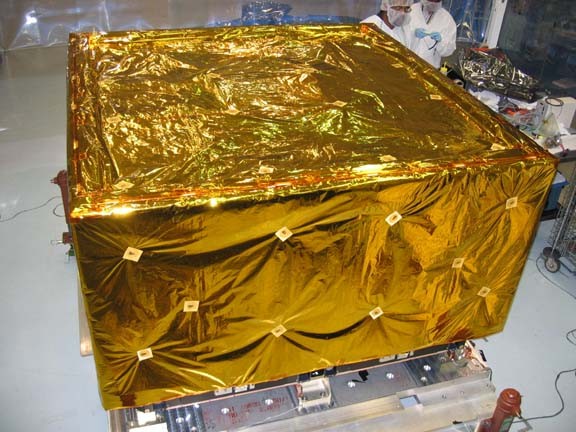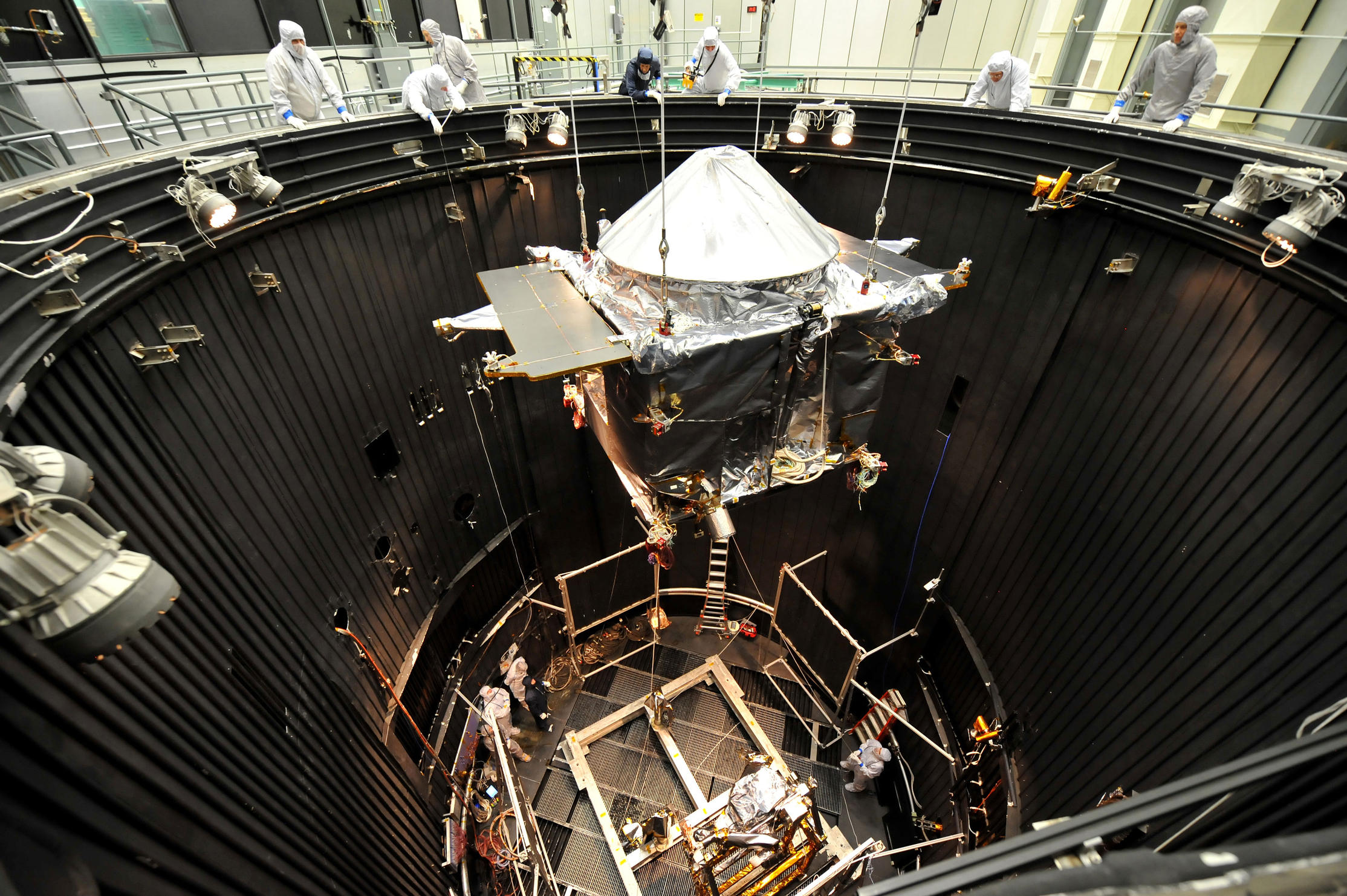Spacecraft Thermal Basics

Key Points
- It’s easy to get too hot in space and then thirty minutes later be too cold. Thermal engineers work to try to keep everything at a comfortable and constant temperature through these changes.
- Thermal engineers have to think about the whole spacecraft. The power people are creating heat, the computer people are creating heat, the radio people are creating heat, and so on. Tracking and helping all these systems can keep you busy with fun challenges.
- Their job is more difficult because they can only get rid of heat by emitting photons (radiation). Convection doesn’t work because there’s no atmosphere and, of course, conduction doesn’t work because there’s nothing to touch.
Introduction
Temperature is something we can all understand since we all experience being too hot or too cold. When we’re too hot, we move to a shady spot or drink a cold beverage. When we’re too cold, we put on blankets or turn a heater on. Thermal engineers do pretty much the same thing to spacecraft: they’ll use shiny blankets both to keep heat in and to reflect sunlight away so things are comfortable. They’ll use heaters in areas of the spacecraft that need to be warmer (like batteries), and some systems use cold fluids to keep things like computers colder.
A Bit More Detail
The ideas around thermal engineering are fairly easy, but the math can get complex quickly because a lof the equations are non-linear (they change quickly with temperature). To help them understand how everything works, they build math models in software.
A big part of understanding the temperature of their spacecraft is understanding how and when the sun shines on them. They work with the orbit designers to map those things and how they change over time. Then they work with the structural engineers to figure out where all the heat-generating things are and how they’re held. Then they work with people like the power and computer engineers to figure out what’s creating heat inside the spacecraft. Then they work with everyone to figure out what the temperature limits are supposed to be. Then they use all those numbers in their own models. There’s a lot that goes into getting this right and things change a lot, so thermal engineers stay busy.
Radiators

Their most popular tool for getting rid of heat is the radiator. It’s a plate (usually aluminum) that spreads heat over a big area. The plate is painted so that it does a good job emitting photons. Some of the biggest radiators, like on space stations, use fluids that run through tubes in the panels but most satellites try to avoid this since pumps leak and fail.
When they use radiators, the thermal engineers work with the orbit and operations teams to make sure the radiators don’t point at the sun. (Radiators pointing at the sun get hot and put heat into the satellite!) This operation limit can affect how the whole spacecraft is designed so it’s always a good idea to get a thermal engineer on the design team early to avoid having to start over.
Materials

Thermal engineers need to understand materials so they can know when they fail and how to optimize the thermal design. For spacecraft, this usually means working with metals and paints. For spacecraft that need to fly through an atmosphere like the Orion capsule or the Mars missions, thermal engineers work with a lot of ceramics.
Multi-Layer Insulation

Pictures of satellites have what looks like gold or silver wrinkly material on them. This material is actually quite a few thin layers of a material with spacers between the layers. It’s called a thermal blanket or multi-layer insulation (MLI) that does a few things:
- Keep heat in. You want to get rid of your heat, but you don’t want to get rid of all of it and you don’t want to do it too quickly. A good thermal blanket helps you stay at a nice, constant temperature.
- Keep the heat out. The blankets are shiny so they reflect most of the sun’s photons away from the satellite.
- Protect from space junk. This isn’t a thermal feature, but it’s a nice bonus. The separation in the blankets helps slow down and disintegrate any small space junk or micrometeoroids that hit the spacecraft.
Thermal Vacuum Testing

Thermal engineers are responsible for what people call TVAC: Thermal Vacuum Testing. This test has you putting your whole assembly into a big chamber where they pump the air out so the pressure is close to the vacuum of space. Then heaters and coolers work to simulate the temperature extremes and profiles the spacecraft will see in space. It’s one of the most expensive and time-consuming (weeks or longer) tests a program runs and any problems from this test can set you back millions of dollars and months in schedule.
Curated Videos
- https://www.youtube.com/watch?v=Jjw4hNxFuH0
They use computer graphics to talk about thermal challenges with the Hubble and the ISS. It’s a good way to learn about some of the extreme temperatures, too. - https://www.youtube.com/watch?v=TN6rZF5dSRg
NASA’s Parker Solar Probe flies close enough to the sun that things could get too hot if it wasn’t engineered well. This short video covers some of the ways they solve their problems. - https://www.youtube.com/watch?v=51bwzEO8XCw
Heat pipes are an important part of many spacecraft. This snappy video makes it clear how these systems work.
Curated Links
- https://scholarsmine.mst.edu/cgi/viewcontent.cgi?article=8755&context=masters_theses
This is a Master’s thesis so maybe not a great resource for true beginners. If you’re looking for a practical walkthrough, though, and especially for small satellites then you’re likely to appreciate this resource. - https://www.esa.int/Enabling_Support/Space_Engineering_Technology/Thermal_Control
ESA put together a short page on why thermal engineering is important. - https://pressbooks-dev.oer.hawaii.edu/epet302/part/8-thermal-system/
The University of Hawaii hosts a great small satellite resource book, including this chapter on thermal systems.
 Space Steps
Space Steps